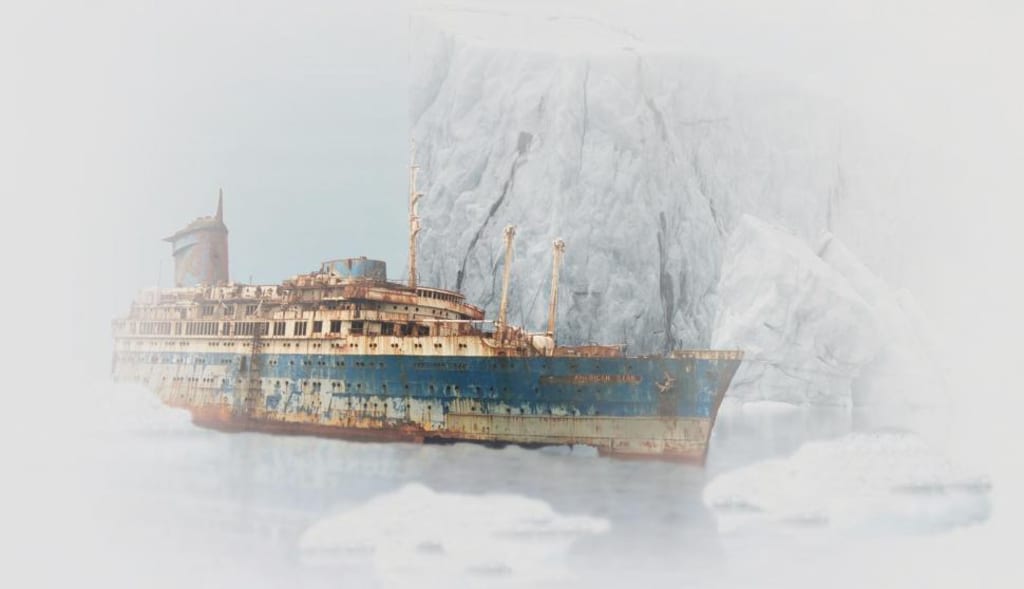Titanic: Hidden Facts Uncovered
Things you need to know about

In the fateful tale of the Titanic's voyage, the echoes of tragedy still resound within our hearts. Amidst the chilling encounter with the iceberg, the majestic ship foundered and anguish befell all who sailed upon her. Yet, beneath the surface, hidden within the depths of this nautical calamity, lie untold narratives that unveil a different side of the saga. Let us now embark on a journey to reveal the lesser-known truths that illuminate the Titanic's story.
As the grand vessel succumbed to the icy waters, panic seized the hearts of the passengers. Desperately, they sought refuge, while the courageous crew fought valiantly against the inevitable. But it was not their absence from the limited lifeboats that sealed their fate; rather, it was their unwavering commitment to duty. Amidst the chaos, a group of extraordinary men chose to remain steadfast, braving the perilous depths of the sinking ship.
Led by the resolute Joseph Bell, a team of engineers, electricians, boilermakers, and plumbers stood as beacons of selflessness in the engine room's labyrinthine corridors. Sacrificing their own chance of survival, these unsung heroes dedicated themselves to a final mission: keeping the vital machinery operational. With unwavering determination, they fought against time and circumstances, ensuring that power coursed through the vessel's veins until the very end.
While passengers clung to their cherished possessions, the brave souls in the engine room maintained an unwavering focus on their duty. The ceaseless hum of the engines echoed their steadfast resolve, a testament to their unwavering commitment. They remained resolute, their hands steadfastly guiding the ship's last distress signals into the night sky, a beacon of hope amidst the encroaching darkness.
The origin of the iceberg that sealed the Titanic's fate is astounding. It wasn't an ordinary chunk of ice; it was a result of several unusual weather conditions that occurred four years prior to the ill-fated voyage. Scientists from the University of Sheffield have confirmed that the Titanic's iceberg foe was created by a period of warm, wet weather that weakened glaciers, making them more prone to calving. The iceberg that ultimately tore through the ship's structure was a behemoth, measuring 400 feet long and weighing two megatons. The Titanic stood no chance against this colossal iceberg that had been forming for years. It sliced through over 100 meters of the ship like a hot knife through butter, sealing its fate. Mother Earth's twisted sense of humor is evident in this unexpected turn of events.
One intriguing detail about the Titanic's design is the existence of a fake funnel. The ship boasted four towering smokestacks, or "funnels," on its exterior. However, only three of them served any real purpose in expelling smoke. The White Star Line, with audacity, added a fourth funnel purely for decoration. Hidden inside this faux funnel was a luxurious first-class smoking room, intended to impress the finest cigar-puffing passengers. The trickery didn't end there. The Titanic's sister ships, the Olympic and the Britannic, followed suit with their own fake funnels. The idea was to prioritize aesthetic appeal over functionality, as if functionality was a trivial concern.
One of the most glaring aspects of the Titanic disaster was the inadequate number of lifeboats. Despite carrying over 2,200 souls, the ill-fated ship had a mere 20 lifeboats instead of the 64 originally required. It's like bringing a teaspoon to a flood. The owners of the Titanic had their priorities askew. They believed that having an abundance of lifeboats would clutter the deck and obstruct the scenic views for their precious first-class passengers. To make matters worse, the safety regulations in place were archaic and ill-suited for the situation. They were designed for ships that believed a damaged vessel could stay afloat long enough for the limited lifeboats to make multiple trips and save everyone. Reality had other plans. The ship sank within hours, and the consequence was the loss of nearly 700 lives. The Titanic serves as a chilling reminder of human arrogance and a wake-up call etched in history's depths.
The tragedy of the Titanic extends to the realm of the unknown. Over 1,500 lives were lost, but the exact number of casualties remains uncertain. Official figures state 1,514, but conflicting sources suggest a range from as low as 1,419 to as high as 1,635. Retrieving bodies from the ocean is a somber task, and those involved in recovering the victims of the Titanic can attest to its grim nature. They managed to retrieve between 316 and 337 bodies, leaving the majority still resting somewhere below. To this day, 42 bodies buried in Halifax, Nova Scotia, Canada, remain unidentified. It is a daunting challenge to identify individuals when they were traveling under assumed names or when the chaos of the disaster led to incomplete lists of survivors. In 2008, the body of a nine-month-old baby, Sydney Leslie Goodwin, was finally identified after 96 years. It serves as a reminder that even after such a long time, there is still room for closure and remembrance.
One astonishing revelation is that an optical illusion played a role in sealing the Titanic's fate. It wasn't just bad luck and poor navigation that led to the ship's destruction—it was an atmospheric phenomenon. Historian Tim Moulton's research reveals that the atmospheric conditions that night were perfect for super refraction, which creates illusions by bending light. The Titanic fell victim to a mirage. Several ships in the vicinity observed this phenomenon, but they failed to recognize the danger it posed. The Titanic's lookouts couldn't see the iceberg in time, and the nearby vessel, the Californian, remained unaware of the Titanic's presence. The air was filled with layers of colder air beneath layers of warmer air, creating a false skyline that made everything appear closer than it actually was. Distress rockets fired by the Titanic seemed lower than they were, thanks to the optical illusion. When the Californian spotted these rockets, they dismissed them as a ship sailing away, failing to come to the rescue. The more we uncover, the clearer it becomes that this ill-fated ship was cursed from the beginning.
In an unfortunate twist, the lifeboat drill on the Titanic was canceled on the very day it struck the iceberg. Lifeboat drills were common practice among ocean liners at the time, and even the crew of the Titanic was supposed to conduct them regularly. However, Captain Edward John Smith made the decision to cancel the drill. The reasons behind this choice remain a mystery, though some speculate that he wanted to hold one last Sunday service before his retirement. How honorable of him. Despite reports of ice in the vicinity and warnings from other ships, Captain Smith chose to forego the one activity that could have prepared the crew and passengers for an emergency situation. It's akin to skipping the safety briefing on a plane because one believes it won't be necessary. Unfortunately, for those aboard the Titanic, luck was not on their side that night. The ship collided with an iceberg, and the rest is history.
The Titanic's tragic tale is woven with stories of heroism, negligence, and unforeseen circumstances. It serves as a haunting reminder of the human capacity for both bravery and folly. As we uncover these hidden aspects of the Titanic, we gain a deeper understanding of the events that unfolded on that fateful night in 1912. The story of the Titanic continues to captivate our imagination, reminding us of the fragility of human endeavors and the enduring legacy of those who were lost.





Comments
There are no comments for this story
Be the first to respond and start the conversation.